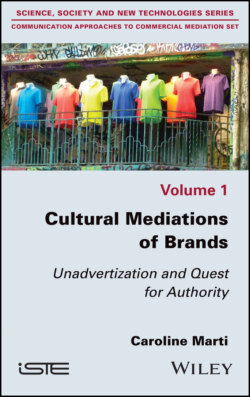Читать книгу Cultural Mediations of Brands - Caroline Marti - Страница 25
1.3. The media and advertising thought process
ОглавлениеCompanies and communication agencies are looking for spaces, or shelters, to deploy the brands they manage, and adopt media appropriation methods that are consistent with those they are targeting, depending on the oppurtunities available to them. The detailed observation of practices shows a multiple and multimodal appropriation, compared to what a media generally articulates.
The media are viewed as a homogeneous whole, but several levels of analysis can be distinguished. They are articulated, complementary, and reinforcing. I distinguish four main levels:
– the first level is that of the medium, that of the inscription support material in which the brand can be embodied;
– the second level is that of the editorial conception which is based on this materiality and relies on the investment of reading;
– the third level is that of the proposed media relationship, which presupposes a particular competence of the person producing the media, a position – here journalism – and a circulation in the social space;
– the fourth level is that of the social power of this media relationship, which can produce credibility and make production particularly effective.
These four levels correspond to four media modalities as so many updatable virtues to enhance brands and provide them with operational efficiency. These virtues are unthought of by most professionals because they are integrated into our collective memory and taken for granted. They permeate representations and communicative practices by the grace of connotation; they are silent frames.
This silence is all the more relevant, as revealing them would be tantamount to displaying the workings of the appropriation strategy and the beliefs that underlie the hold5.
1 1 The cultural productions of brands are concomitant with advertising campaigns, loyalty programs, etc.
2 2 Diffusion Contrôle, formerly OJD, is the French press distribution control body that certifies circulation figures and distinguishes between paid and paying circulation.
3 3 These different points were addressed in my thesis (2005), devoted to brand magazines.
4 4 However, she has worked on contrary examples, particularly in television media, with the example of Patrick Le Lay’s comments in 2004 on the “available brain time” sold to Coca-Cola. See Patrin-Leclère (2005) and in particular “Médias et publicité, l’impossible débat. Les leçons de l’affaire Le Lay et de son “temps de cerveau disponible”.
5 5 (Jeanneret 2014): I borrow the term from the author who refers to “taking hold” in the first part.
